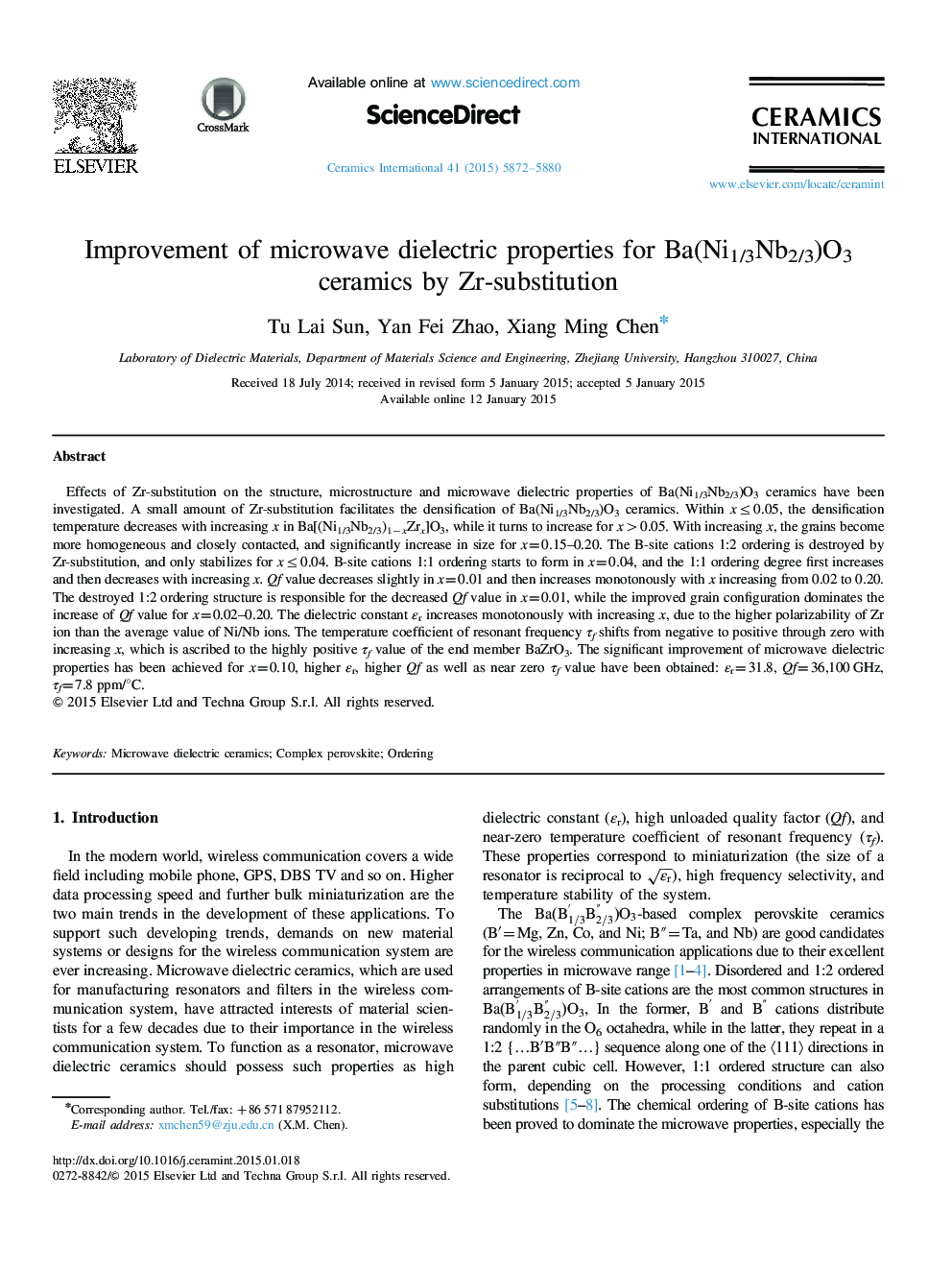| Article ID | Journal | Published Year | Pages | File Type |
|---|---|---|---|---|
| 1460172 | Ceramics International | 2015 | 9 Pages |
Effects of Zr-substitution on the structure, microstructure and microwave dielectric properties of Ba(Ni1/3Nb2/3)O3 ceramics have been investigated. A small amount of Zr-substitution facilitates the densification of Ba(Ni1/3Nb2/3)O3 ceramics. Within x≤0.05, the densification temperature decreases with increasing x in Ba[(Ni1/3Nb2/3)1−xZrx]O3, while it turns to increase for x>0.05. With increasing x, the grains become more homogeneous and closely contacted, and significantly increase in size for x=0.15–0.20. The B-site cations 1:2 ordering is destroyed by Zr-substitution, and only stabilizes for x≤0.04. B-site cations 1:1 ordering starts to form in x=0.04, and the 1:1 ordering degree first increases and then decreases with increasing x. Qf value decreases slightly in x=0.01 and then increases monotonously with x increasing from 0.02 to 0.20. The destroyed 1:2 ordering structure is responsible for the decreased Qf value in x=0.01, while the improved grain configuration dominates the increase of Qf value for x=0.02–0.20. The dielectric constant εr increases monotonously with increasing x, due to the higher polarizability of Zr ion than the average value of Ni/Nb ions. The temperature coefficient of resonant frequency τf shifts from negative to positive through zero with increasing x, which is ascribed to the highly positive τf value of the end member BaZrO3. The significant improvement of microwave dielectric properties has been achieved for x=0.10, higher εr, higher Qf as well as near zero τf value have been obtained: εr=31.8, Qf=36,100 GHz, τf=7.8 ppm/°C.
